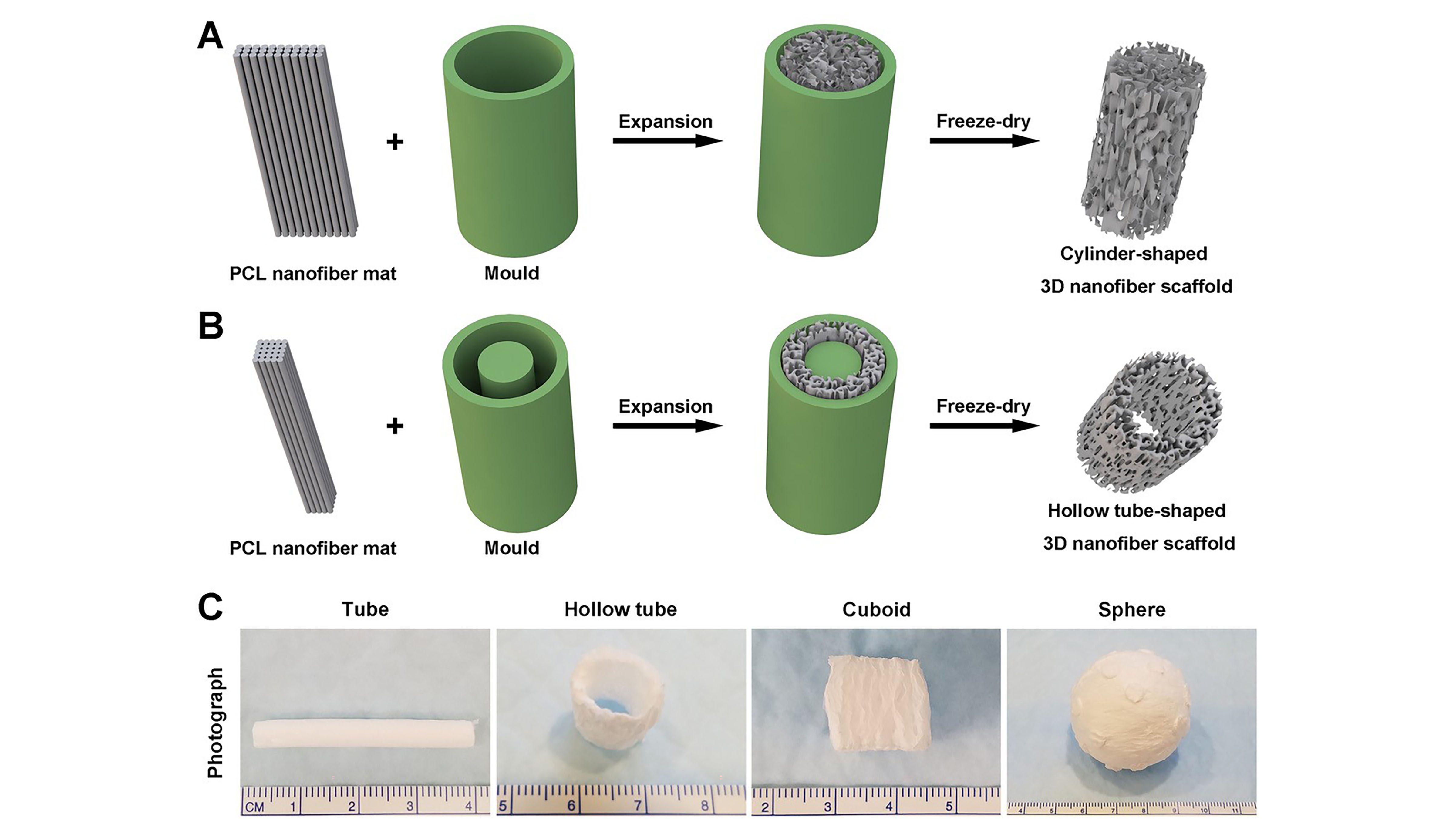In APL Bioengineering, researchers from Tufts University examine some of the latest advances in wearable electronic devices and systems being developed using electrospinning – the fabrication of nanofibers with tunable properties from a polymer base – and showcase the many advantages electrospun materials have over conventional bulk materials. Their high surface-to-volume ratio endows them with enhanced porosity and breathability, which is important for long-term wearability, and with the appropriate blend of polymers, they can achieve superior biocompatibility.
Tag: Electrospinning

Nanofiber Membranes Transformed Into 3D Scaffolds
Researchers combined gas foaming and 3D molding technologies to quickly transform electrospun membranes into complex 3D shapes for biomedical applications. The new approach demonstrates significant improvements in speed and quality compared with other methods, and is the first successful demonstration of formation of 3D neural tissue constructs with an ordered structure through differentiation of human neural progenitor/stem cells on these transformed 3D nanofiber scaffolds. They discuss their work in this week’s Applied Physics Reviews.